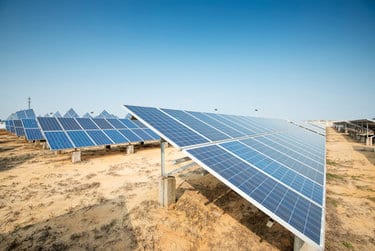The generating cost comparison between renewable energies and fossil fuels is narrowing, with 2015 recording a “significant shift,” says BNEF. Overall, levelised costs of electricity (LCOEs) for renewable energies are decreasing, while those for fossil fuels are increasing.

In its Levelised Cost of Electricity Update for the second half of 2015, Bloomberg New Energy Finance (BNEF) finds that global average LCOEs for onshore wind and crystalline silicon solar PV have fallen, from US$85/MWh and $129/MWh in H1 2015, respectively, to $83/MWh and $122/MWh in H2.
LCOEs for coal, gas and nuclear, on the other hand, recorded increases in most parts of the world. In both the Americas and EMEA region, for instance, nuclear LCOEs rose to $261 and $158/MWh, respectively (BNEF did not provide the H1 figures).
Meanwhile, LCOEs for combined-cycle gas turbine generation, rose to $82/MWh in the Americas, $93/MWh in Asia-Pacific and $118/MWh in H2, from $76, $85 and $103 in H1, respectively. For coal-fired generation, they increased from $66 to $75/MWh in the Americas, $68 to $73/MWh in Asia-Pacific, and from $82 to $105/MWh in Europe.
Commenting, Seb Henbest, head of EMEA at BNEF, said, “Our report shows wind and solar power continuing to get cheaper in 2015, helped by cheaper technology but also by lower finance costs. Meanwhile, coal and gas have got more expensive on the back of lower utilisation rates, and in Europe, higher carbon price assumptions following passage of the Market Stability Reserve reform.”
Overall, BNEF says in the U.K. and Germany, onshore wind is now fully cost-competitive with gas-fired and coal-fired generation, once carbon costs are taken into account.
Specifically looking at solar, BNEF tells pv magazine utility-scale PV costs have decreased by around 15% since H1 in most European markets, primarily due to falling finance costs. “In the past six months Germany and the UK conducted their first solar auctions, which have revealed low project costs in both markets,” the analysts say.
 Due to the licensing fee for projects larger than 1 MW, Turkey is seen as the most expensive place to implement large-scale solar PV in the EMEA. “Our mid-point LCOE estimate is well above the basic feed-in tariff of $133/MWh … however, we are seeing many groups developing portfolios of plants just below 1 MW to avoid the fee and these have a lower LCOE,” they continue.
Due to the licensing fee for projects larger than 1 MW, Turkey is seen as the most expensive place to implement large-scale solar PV in the EMEA. “Our mid-point LCOE estimate is well above the basic feed-in tariff of $133/MWh … however, we are seeing many groups developing portfolios of plants just below 1 MW to avoid the fee and these have a lower LCOE,” they continue.
Commenting on the U.S. market, Jacqueline Lilinshtein, BNEF U.S. analyst says, “It’s surprising how much the cost of utility-scale solar PV has dropped in the US … it’s now ~$50 per megawatt hour if you include federal subsidies. Six months ago, it was $60 – so that’s a pretty significant drop. We attribute this to lower installation and equipment costs fueled by increased competition to build before federal subsidies expire.”
The table below, taken from Reuters, shows central estimates for average LCOEs in different parts of the world in H2.
|
Country/Region |
Technology |
LCOE (US$/MWh) |
|
U.S. |
Onshore wind |
80 |
|
U.S. |
Solar PV |
107 |
|
U.S. |
Coal |
65 |
|
U.S. |
CCGT |
65 |
|
China |
Onshore wind |
77 |
|
China |
Solar PV |
109 |
|
China |
Coal |
44 |
|
China |
CCGT |
113 |
|
Britain |
Onshore wind |
85 |
|
Britain |
Coal |
115 |
|
Britain |
CCGT |
115 |
|
Germany |
Onshore wind |
80 |
|
Germany |
Coal |
106 |
|
Germany |
CCGT |
118 |
|
Americas |
Coal |
75 |
|
Americas |
CCGT |
82 |
|
Americas |
Nuclear |
261 |
|
Asia Pacific |
Coal |
73 |
|
Asia Pacific |
CCGT |
93 |
|
EMEA |
Onshore wind |
91 |
|
EMEA |
Solar PV |
127 |
|
EMEA |
Coal |
105 |
|
EMEA |
CCGT |
118 |
|
EMEA |
Nuclear |
158 |
Source: PV Magazine. Reproduced with permission.










